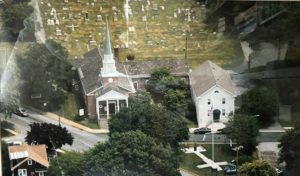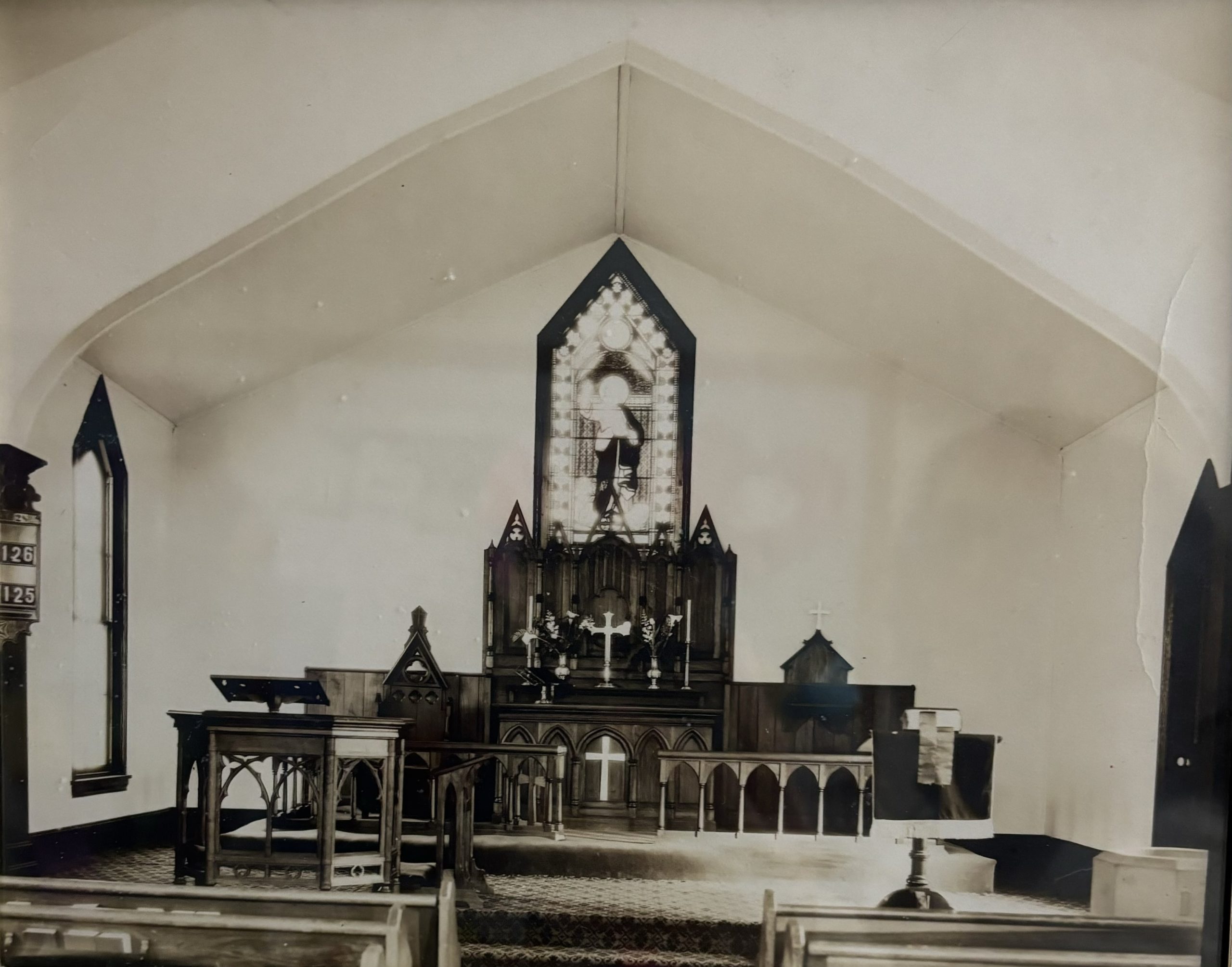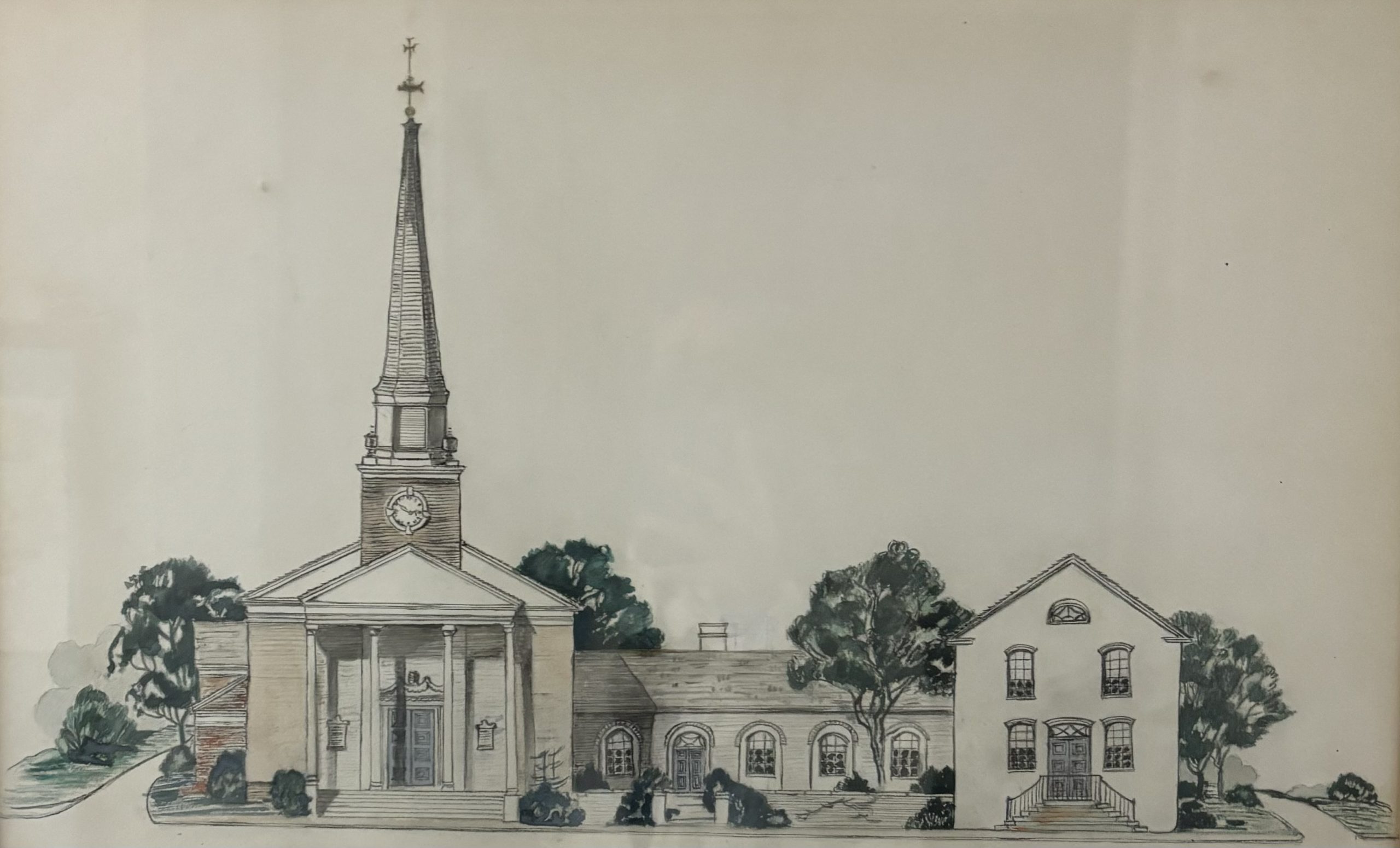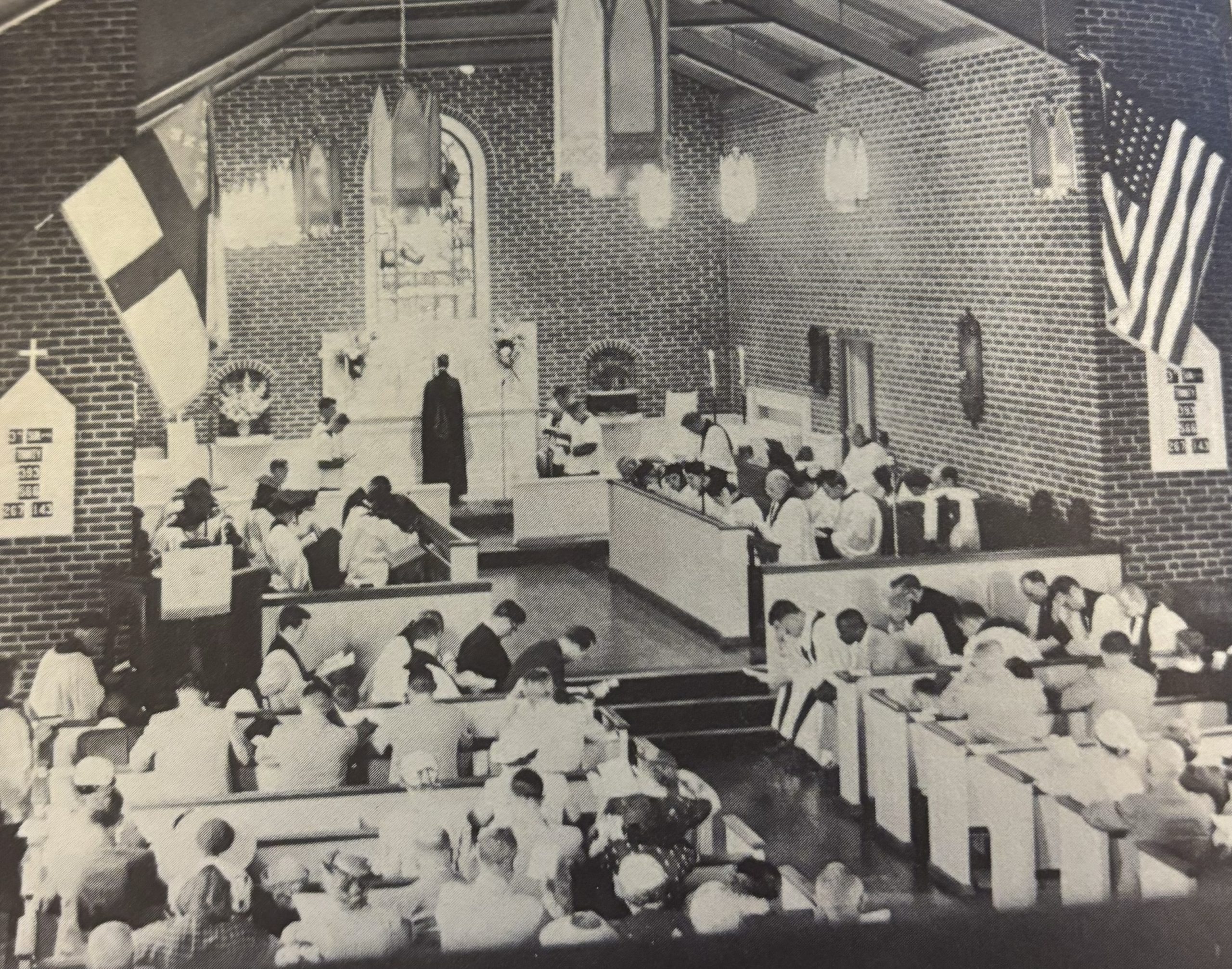In 1716, Mr. James Robinson gave land for a church building in Stanton, Delaware. This building was dedicated to St. James on July 4, 1717, in double honor of its leading benefactor and of St. James, whose feast was celebrated that month.
In 1761, repairs were needed, and the congregation decided to erect a new church building and place it in Newport. Land was purchased for this purpose on top of a hill overlooking the Christiana River.
In 1772, a brick building was begun at Market and British Streets. The ministry was shared by clergy from Immanuel, New Castle, and Old Swedes, Wilmington.
In 1776, Delaware Revolutionary forces took over the partially constructed building as their headquarters and stables. The building was used again for worship in 1787.
Fire destroyed the building in 1810. In 1855, a building was purchased from the Methodists under the guidance of Bishop Alfred Lee, the first Bishop of the Diocese of Delaware. In June of 1875, the cornerstone for the “White Gothic Church” was laid at a site behind the present church. By October, the building was completed in such a fashion that lay services were held. The church was consecrated on September 5, 1877.
The Rev. Millard Riker, an expert woodworker, came to St. James. He redecorated the church, remodeled the altar and tables, and created a pulpit, which is still in use.
The Rev. Alexander Boyer was ordained in the old church and was the first full-time rector in the history of Saint James, Newport. He was responsible for the most spectacular growth recorded in a church in Delaware. In 1947, St. James was granted the status of an independent parish (separated from St. James, near Stanton, and from St. Barnabas, Marshallton). A building fund was launched to construct the present building as the seventy-five-year-old building was no longer adequate.
On St. Andrew’s Day, November 30, 1949, the new St. James Church was dedicated at a special service. The new church was packed and overflowing the night of the dedication service. No one minded sitting on a folding chair or standing.
The Rev. Charles Schreiner was elected Rector in 1951, and more progress was made. A steeple was added, and the parish house was remodeled. Light fixtures and a colonial altar were introduced. A wing was built onto the original building for the church school.
In 1954, the Rev. Charles Priebe became Rector and served the longest ministry of 22 years. The Rt. Rev. J. Brooke Mosley came in 1955 to consecrate the Church in the name of the disciple “James, son of Zebedee. The document is on display in the hall cabinet.
After Rev. Priebus resigned in 1976, we had two full-time rectors: Rev. Ronald Fitts (1976-1983) and Rev. George Deatrick (1990-1992). There have been a variety of clergy members who filled in the gaps for which the vestries were most grateful.




